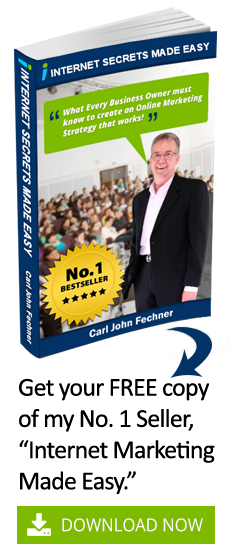 The term “style” is thrown around a lot by writers, but it’s a misnomer for copywriters because “style” doesn’t work in the extremely short attention economy of the internet.
The term “style” is thrown around a lot by writers, but it’s a misnomer for copywriters because “style” doesn’t work in the extremely short attention economy of the internet.
Good copy isn’t necessarily “stylish.”
But copy that establishes trust, authority, builds relationships, and gets people talking, sharing, and buying is in high demand.
A lack of style is what makes it work, so writers who master this “style” are sought after and revered.
Legendary ad man David Ogilvy was one of those writers, and he said, “A good advertisement is one which sells the product without drawing attention to itself.”
It sounds counterintuitive, but it holds up under pressure, and I’ll explain why great content marketing is built on that exact premise.
Clear communication is the key to effective copy
Your best copy needs to be “display window clear,” and you need to be out there every morning with your Windex, to make sure it doesn’t distract from the product or service you provide for your clients and customers.
Every writer eventually reaches for a style guide to help them craft clear copy, and there are countless helpful rulebooks and list posts that offer writers advice about proper usage and consistent language.
Copyblogger actually has its own internal style guide, and members of the editorial crew often squabble about usage over (virtual) martinis.
I am also a big fan of the classic English guidebook, The Elements of Style by Strunk & White. The aged copy I keep handy is dog-eared and yellowing.
In it, William Strunk advises writers,
A sentence should contain no unnecessary words, a paragraph no unnecessary sentences, for the same reason that a drawing should have no unnecessary lines and a machine no unnecessary parts. This requires not that the writer make all his sentences short, or that he avoid all detail and treat his subjects only in outline, but that every word tell.
This is very solid advice for online publishers … from 1918!
A copywriter comes to the rescue
It was actually famed writer E. B. White who updated professor Strunk’s “little” 43 page English rulebook in 1959.
He revived it from scholastic obscurity to become what Time magazine has called “one of the 100 best and most influential books written in English since 1923.”
E. B. White was more than a revered journalist (contributor to the New Yorker for 60 years), and award-winning children’s author (Charlotte’s Web).
He honed his writing style as a copywriter in the 1920s, and contributed what he learned to The Elements of Style re-issue in chapter V, “An Approach to Style.”
It’s no secret why this revered text is so short, and so effective.
Mr. White edited the style guide with some reluctance, and was quoted years later as saying,
My role in the revival of Strunk’s book was a fluke — just something I took on because I was not doing anything else at the time. It cost me a year out of my life, so little did I know about grammar.
Make every word tell
White’s lack of grammatical knowledge did not prevent the guide from becoming a bestseller for the better part of the last 50 years.
In interviews, White wanted to remind writers that rules are meant to be broken, and that every writer has their own unique point of view and voice.
Style results more from what a person is than from what he knows.
In other words, every writer can memorize rules, but how you get people’s attention requires some creativity.
Don’t get too hung up on the rules, or your copy might end up sucking, and that would break the first rule of Copyblogger.
In honor of E. B. White I have updated Dean Rieck’s post The Ultimate Blogger Writing Guide.
This list is only a sampling of the vast amount of knowledge available to online publishers and content marketers, but they are a few things that have helped me most along the way.
What I present to you is an annotated guide to effective online copywriting “style” …
1. Headline Writing 101
Every writer who wants to make an impact online must take this clinic.
There is only one reason your client or prospect will read a single word of the copy you’ve written: your headline. This is where you should spend 70% of your time.
Start with the 4 U’s:
- Useful
- Urgent
- Unique
- Ultra-Specific
2. Use common spelling
Flourishes and variations of common words distract your readers and pull them out of the story you’re telling (unless your demographic is girls aged 7-13).
Avoid:
- pleez for please
- thru for through
- nite for night
- 2moro for tomorrow
- @ for at
Tweets and text messages require some brevity, slang, and LOL acronyms, but connecting with your audience in longer copy requires fewer distractions.
3. Avoid hyperbole and fancy words
One of the first lessons I learned as a writer at Copyblogger was to tone down my language.
Good copy cuts like a knife. When it’s action you’re after, avoid big words that make you sound like you’re trying too hard to sound smart or important.
E. B. White said it best,
Do not be tempted by a twenty-dollar word, when there is a ten-center handy …
4. Put the reader first
It is our job as copywriters to tap into the hopes, dreams, and fears of our audience. This requires research, and the magic of the word “you.”
Proven to be one of the English language’s most powerful words, you can’t lose.
5. Write in a natural way
This is an indispensable tip for all bloggers and copywriters.
You must speak the language of your audience, and do it in a way that conveys you are a real person, with genuine interest in offering your help and expertise.
How else are your prospects going to get to know, like, and trust you?
How else are search engines going to recognize that you have the answers to people’s questions?
Research, research, research. Know your audience inside and out.
6. Work from an outline
Outlines work! Even if you don’t have the energy or time to sketch out a simple AIDA outline, give yourself some idea of the goals you’d like to accomplish.
Even something as simple as a post-it-note with a few bullet points works. Successful writers use outlines. They don’t stifle creativity … but they’re helpful in reminding you to stick to the point.
7. Write with nouns and verbs
This is Copywriting 101 — Precise language convinces; flowery language distracts.
Concise and specific copy moves the prospect along, but adjectives and adverbs are just filler.
The more descriptors you throw in there, the higher the chances are that someone with the attention span of a hummingbird will click away (unless you are describing the features of something technical).
8. Revise and rewrite
Ogilvy is quoted as saying,
I am a lousy copywriter, but I am a good editor.
He would edit his first draft four or five times before showing it to a client, who would inevitably change it again.
9. Do not overwrite
Without clarity your copy is shot. Overwriting is a symptom of under thinking. Good copy is damn hard to write.
If you can’t explain it simply, you don’t understand it well enough.
~ Albert Einstein
10. Do not overstate
Superlatives have the power to wreck your copy.
When you overstate or exaggerate your claims (with things like trumped-up testimonials), you risk losing the trust of your audience.
An understated promise often does a better job of capturing reader attention than screaming hype does.
11. Be clear
Shine that display glass.
Do some editing. Then put it down and do something else. Then, come back and edit again.
I’ve found that printing something out on paper helps lessen distractions of a computer screen.
12. Don’t mix metaphors
If a product sings when used correctly, but sinks if used improperly, then it is guilty of being both a songstress and an anchor, and this is very distracting.
Stick to one metaphor or the other, but not both in one sentence.
13. Simplify your language:
Make every word tell.
Delete the words that are just window dressing.
Copy is haiku,
simple yet evocative.
Don’t mess it up, please.
ARTICLE SOURCE: This content is syndicated news that can be used for your research, and we hope that it can help your productivity. This content is for educational purposes and is not made for any kind of commercial purposes of this blog.




